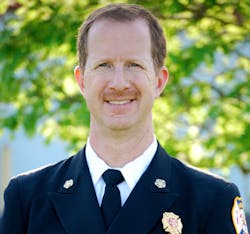As with many things in life, learning how to lead others is not something that can be done overnight. Think back to the best leaders you have had over the years. There were skills they had in common. Moreover, they probably had “subtle skills” that you may not have even known they possessed, yet those subtle skills were more likely than not the skills that drove you to do more, perform better, and follow these leaders wherever they took you. These subtle skills are often overlooked in our studies of leadership because they are often taken for granted by those who possess them and elusive for those who do not. With this in mind, let’s delve into a couple emotional quotient (EQ) areas that, through understanding, will help you be a more influential leader. Those factors are personality and motive.
To illustrate these concepts, let’s set up a scenario to draw outcomes. As the leader of the organization, you need to present a proposal to leadership for the purchase of a new engine. A team of four firefighters and EMS personnel at different ranks has been assembled to help develop the proposal. Each of the four team members has a different background and set of experiences. One is an extroverted, driven senior firefighter with a young family. The second is a new paramedic with three years of fire service experience; she is interested in promoting within the next two or three years. The third is a senior captain for the station where the new equipment will be assigned. The fourth team member is the apparatus operator who is about to retire, and this purchase will be his self-described “legacy.” This should be an easy process, right?
Personality profile
Now let’s consider personality and motive. Some will argue that personality is the easier of the two to understand; however, nothing is “easy” when it comes to human nature. Many psychologists, psychiatrists, sociologists and others have studied personality and developed many different theories. Depending on where each of you are in your careers, you have probably taken a few different personality assessments. Each person responds differently to the outcomes. People are described as type A or type B, and with that description comes a set of preconceived expectations for behavior. There are the Myers and Briggs assessment, psychogeometrics, multiple “color” assessments as well as many others available to describe personality.
It seems that anyone would have enough information to understand the personality of an individual in order to influence them and work effectively with them. But, more often than not, that does not hold true. Personality is but the tip of the iceberg, so to speak. How can being introverted versus extroverted be enough of an understanding to influence another individual? Think back to what you understand your personality to be, and then think about how you would react to someone only using that knowledge when working with you. If you are like me, I am more complex than that, and that simplistic approach wouldn’t work for either of us.
Circling back to our engine project, assigning the workload for the project by following personality would be the next logical step. The outgoing firefighter could be assigned to lead the project because of his personality of being able to bring people together. The captain would be another choice for this role, as he is the leader of the station and obviously has the experience to lead. What about the others? An outgoing personality does not really give the depth necessary to lead a project as such; moreover, there is a much more important consideration to help create a better outcome with continued dedication to the project.
Motivation matters
Motivation is a much deeper topic to understand, and it takes time and personal commitment to those we are working with to customize approaches for success. To take influencing to the next level, a good leader MUST take the time to get to know the people working alongside them. That means having the desire to help each and every person to be successful, and in the end, that should be the goal of each and every leader! To do this, we must dig into individual motives that drive people to do what they do. Motives will change over time and from situation to situation. There are many pioneers in this field of understanding from Abraham Maslow to Richard Ryan and Edward Deci to Dr. Taylor Hartman and many others.
While this area can be overwhelming, if a leader looks first to core motives, that will set the stage for long-term success. Each person has a set of core motives that drive them in EVERYTHING they do, one way or another. Some people may be driven by power, intimacy, fun or peace. Don’t assume that one of these drives is better than or lesser than another; each drive has myriad meanings and understandings. A good understanding, both as leaders and individuals, will help to create stronger working environments and relationships. The key point is creating better, stronger relationships where the individual has personal accountability in the outcomes from the relationships. This strengthens all aspects of the individual, which strengthens the organization.
Thinking about assignments with a focus on core motives can drive us to a much better proposal. Ask yourself “who has the most to gain or lose from the outcome?” The two who come to mind are the retiring apparatus operator and the captain of the station. There is one other person who would benefit from a good outcome as well if she was involved, that being the new paramedic/firefighter interested in promoting.
As the supporting leaders we are, consider the following, motive-driven, assignments: The captain is the overall coordinator; he then coaches the up-and-coming officer (paramedic/firefighter) as the project lead. This gives her the stretch in leadership with the confidence that the captain has her back. She should then be coached to rely on the driver operator for the key layout of the new apparatus with his insight as to the needs and long-range goals. Finally, the senior firefighter should be asked to assist with the compartmentation that will keep him involved throughout the project development. These assignments support the personalities, but more importantly, they capitalize on the motives each person has for the best outcome.
Going forward
Take these principles forward in both your personal life as well as your professional life. You will be rewarded with better relationships and better outcomes. While you will have the personality overlay, the power of understanding the core or changing motives will help you to be a stronger, more understanding leader.
About the Author

Norvin Collins
Norvin Collins was selected as the Fire Chief for San Juan Island Fire & Rescue in Oct. of 2018. The District protects 55 sq. miles and the population of approx. 9,000 residents on San Juan Island as well as living on Brown and Pearl Islands along with the DNR land on all 172 named Islands within San Juan County. 500,000 visitors populate San Juan Island throughout the course of the year for the natural beauty the area holds. The District is a combination Emergency Services Organization with 8 full-time staff and 50 Paid-On-Call volunteers.
Chief Collins was selected as Sauvie Island Fire District's first paid fire chief in Dec. of 2010. He served Sauvie Island Fire District as a paid Chief along with an administrative assistant, facilities/apparatus manager, and 35 volunteer members; serving approximately 36 square miles of predominately rural and Oregon State land with 1600 citizens and portions of two counties and receives 1.5 million visitors a year.
Norvin Collins served as a Division Chief for Tualatin Valley Fire & Rescue where he worked from 1994 through 2012 having held the ranks of firefighter/paramedic, lieutenant, captain, battalion chief, and division chief. Additionally, Norvin served as the District’s Volunteer Coordinator for five years overseeing the volunteer operations for Oregon’s largest combination department.
Chief Collins presents nationally on a variety of leadership and development topics for the International Association of Fire Chiefs' (IAFC) Volunteer and Combination Officers Section (VCOS), State Chief’s Associations, Elected Officials Conferences, and other local and national organizations. Norvin is an Elected Board member for the VCOS and holds positions on the VCOS national conference planning committees, a Planning Section Chief for a regional Type III Incident Management Team, and a member of numerous committees both internal and external to the fire service.
Chief Collins holds a B.S. in Fire Administration, a M.S. in Psychology, and EFO credentials through the National Fire Academy. He holds numerous fire and medical operational certifications as well as having published papers and articles on various fire service topics.
